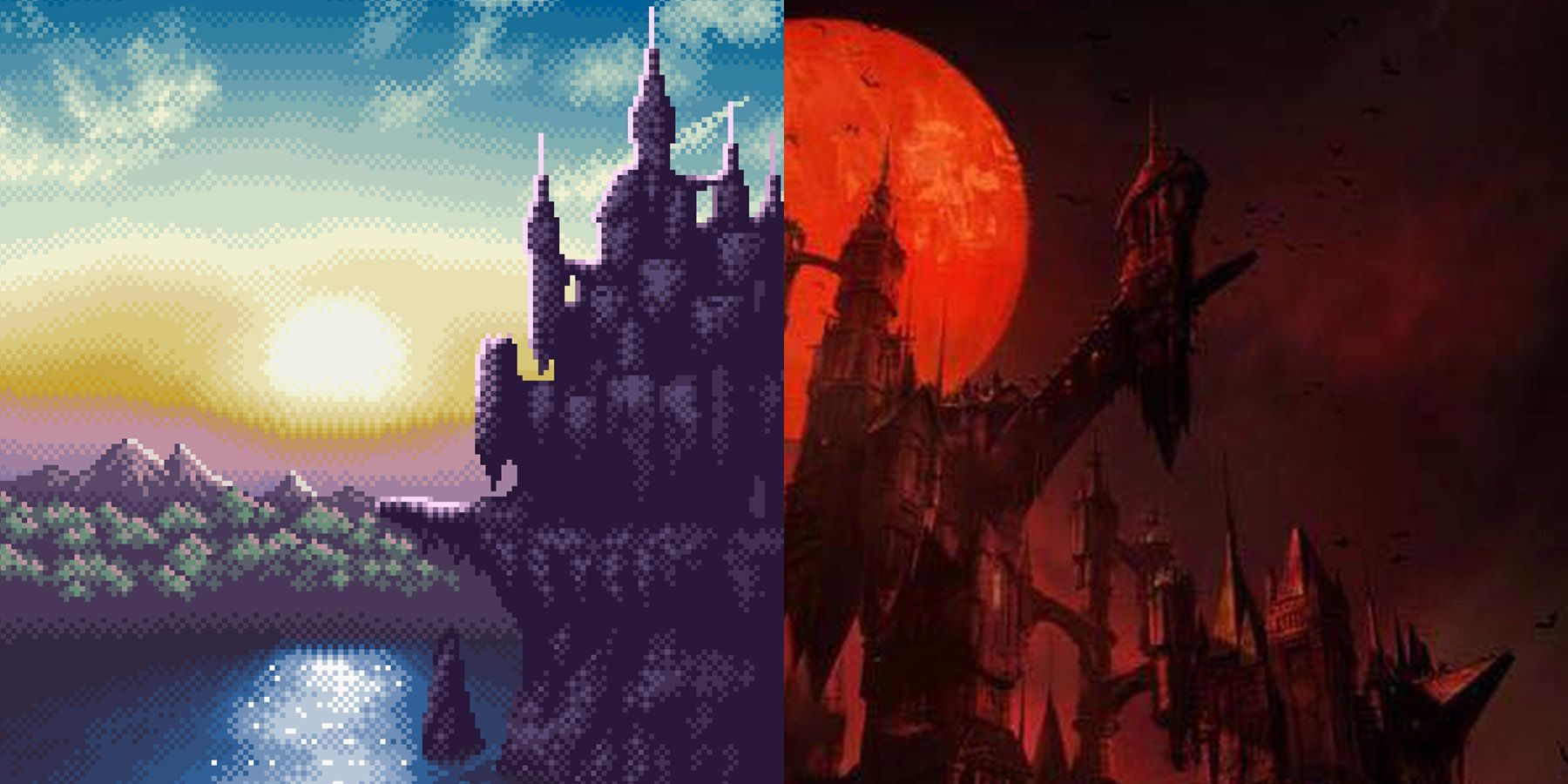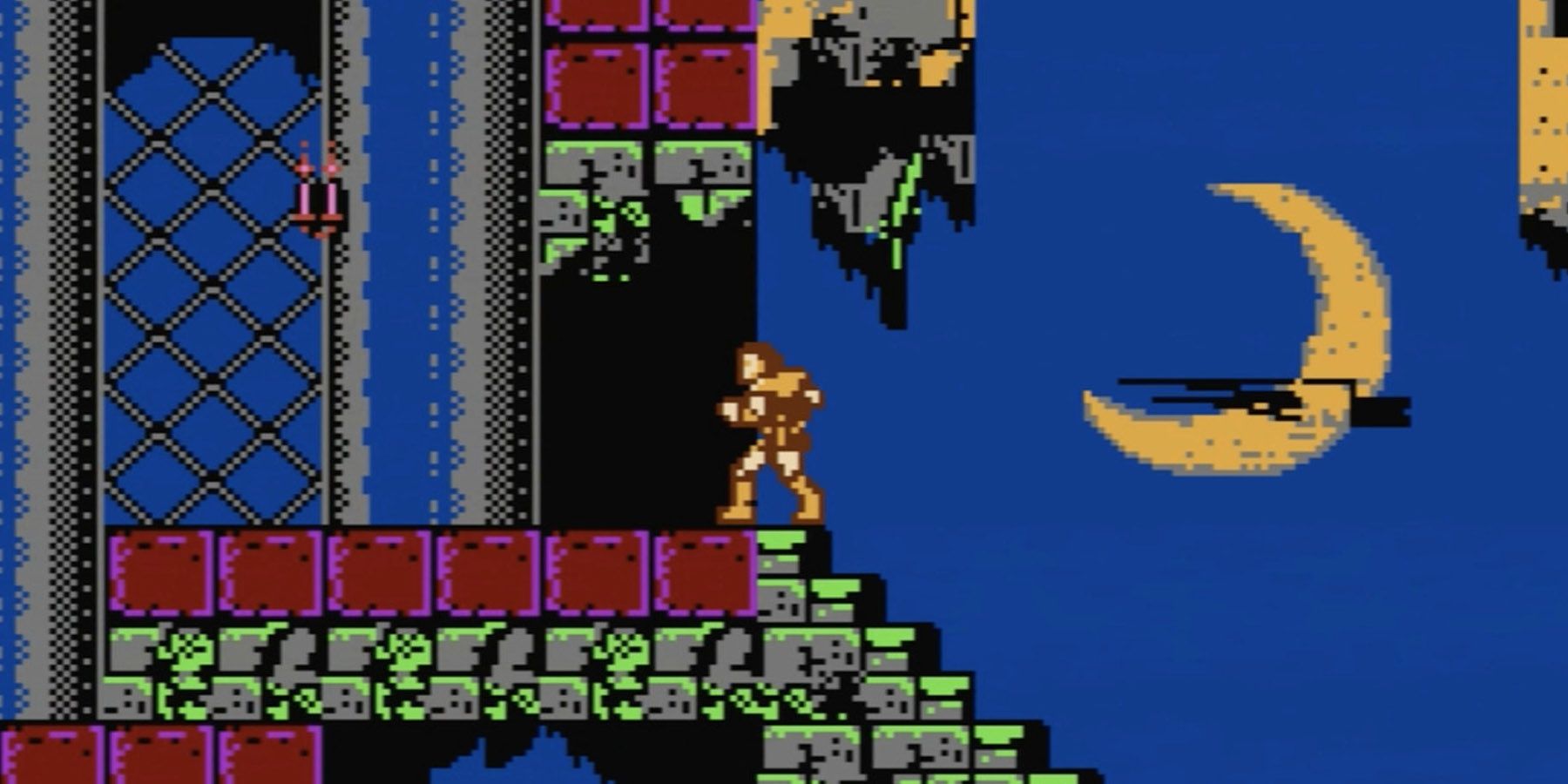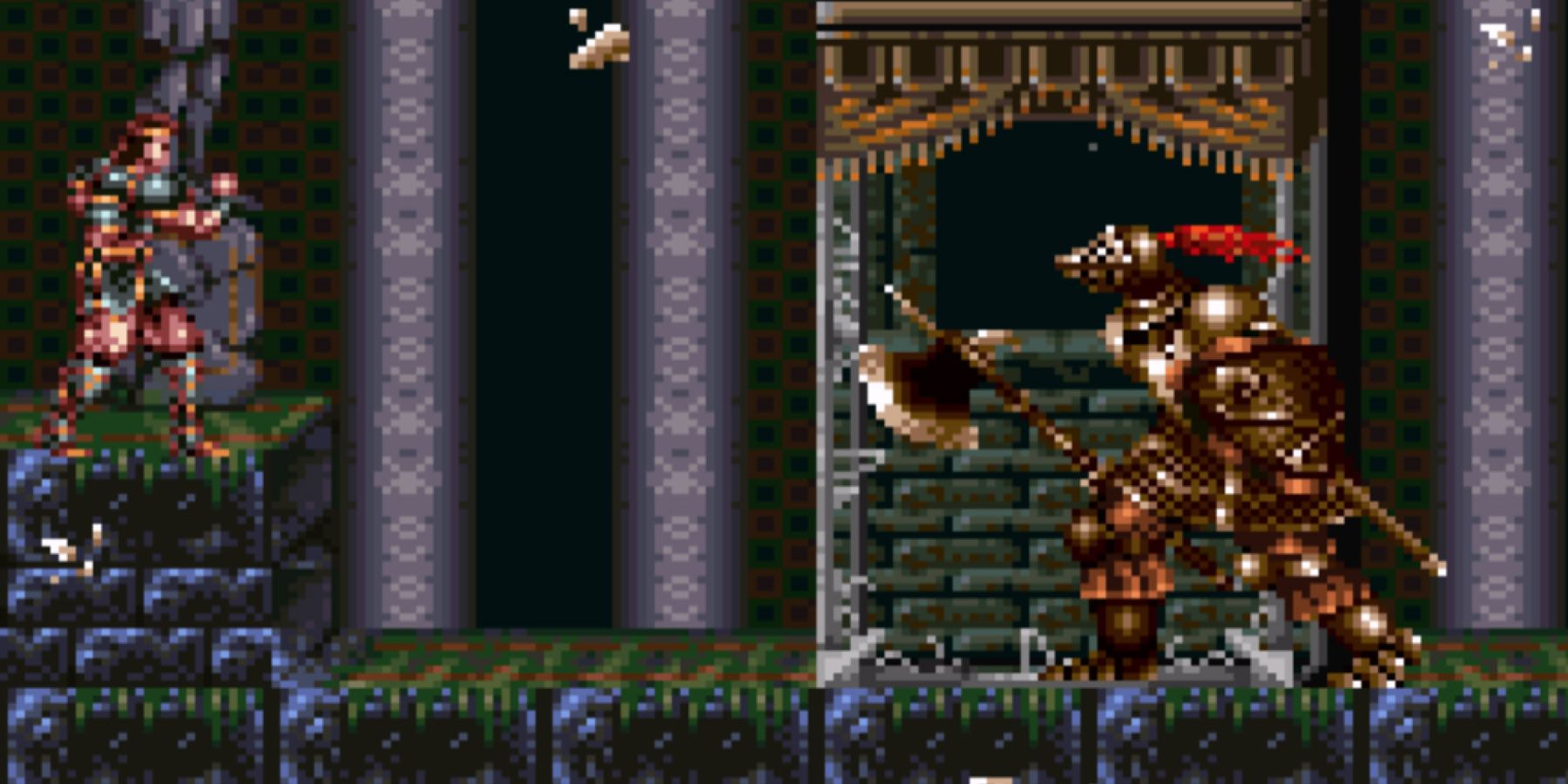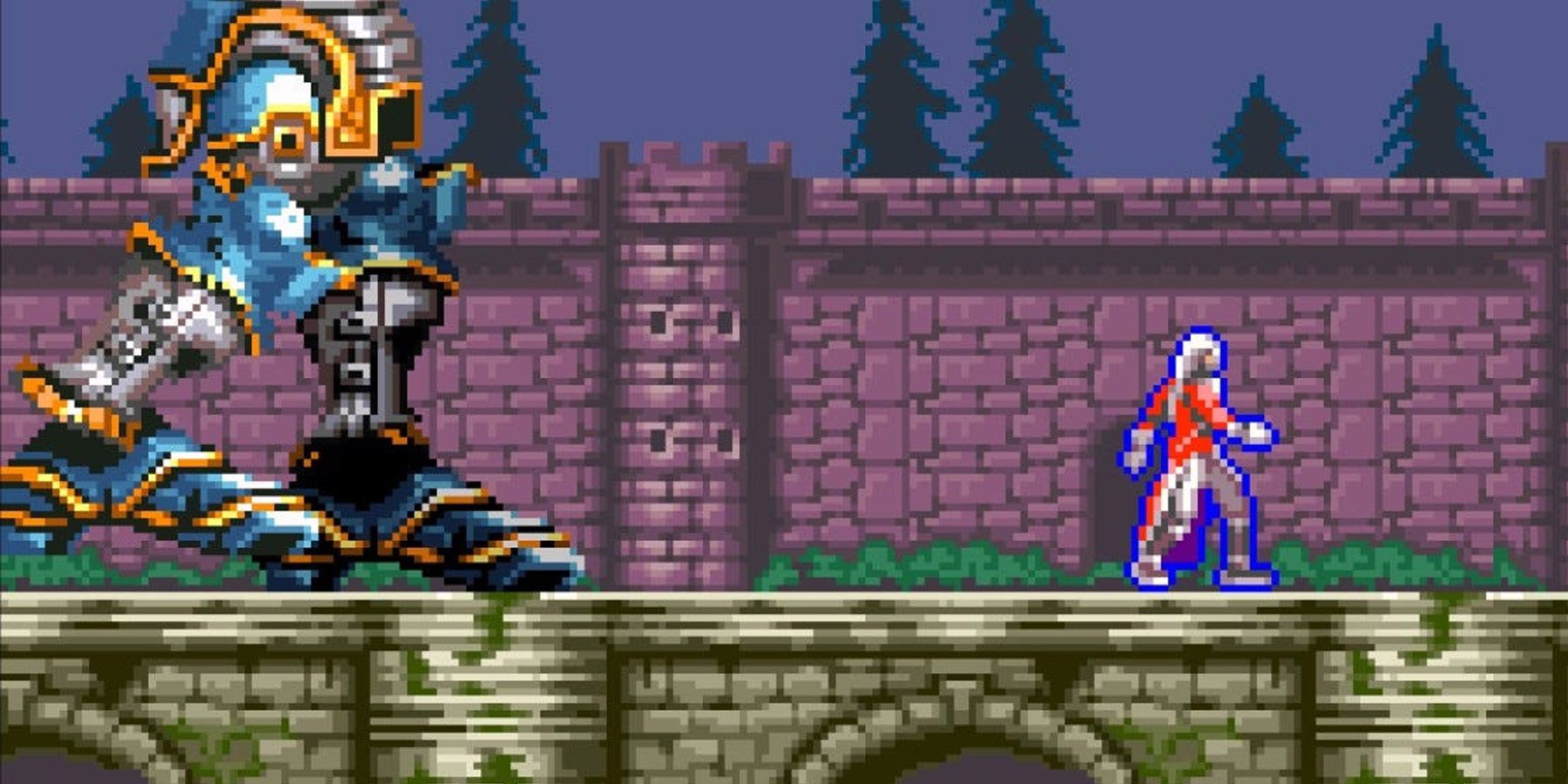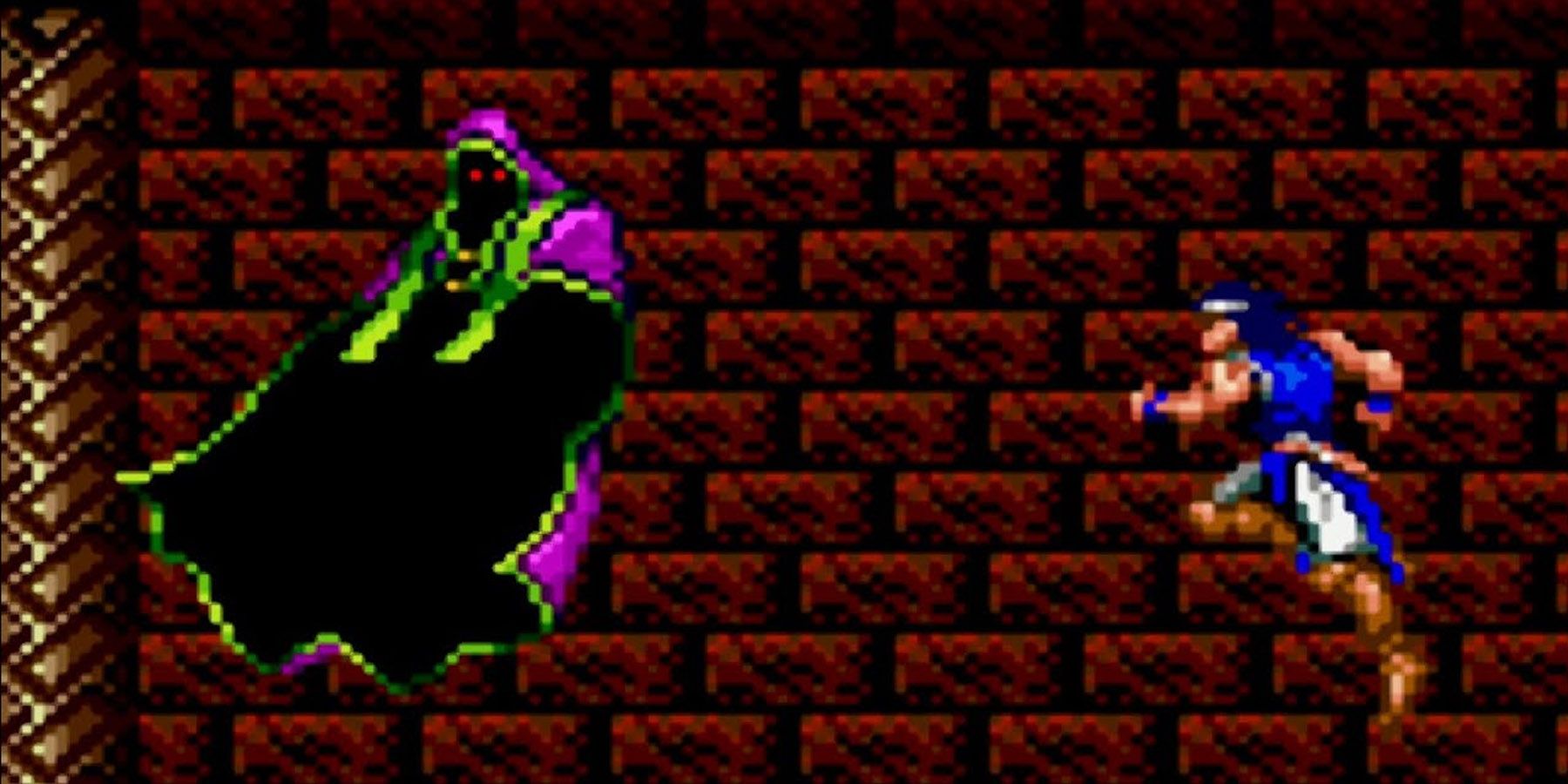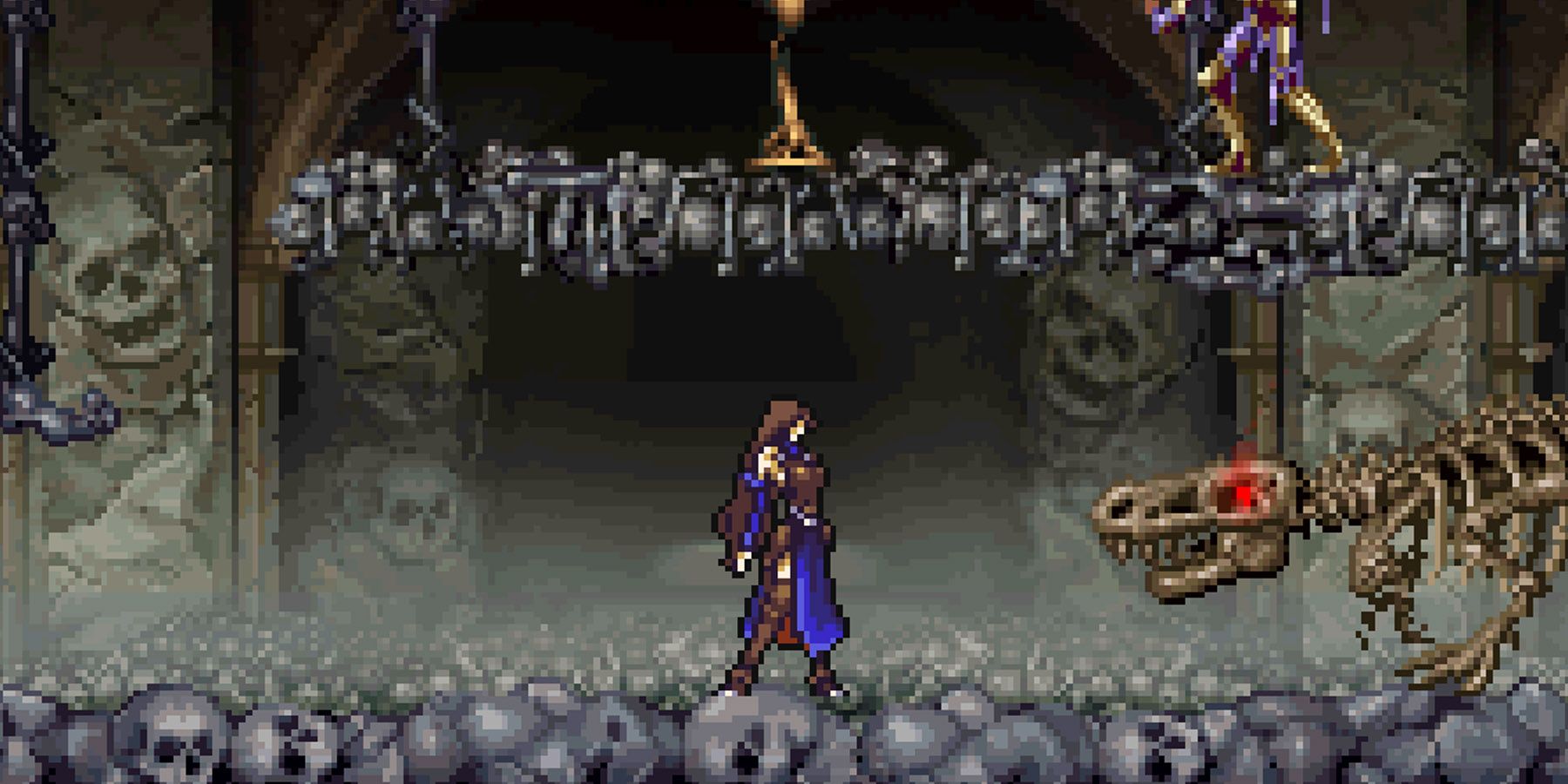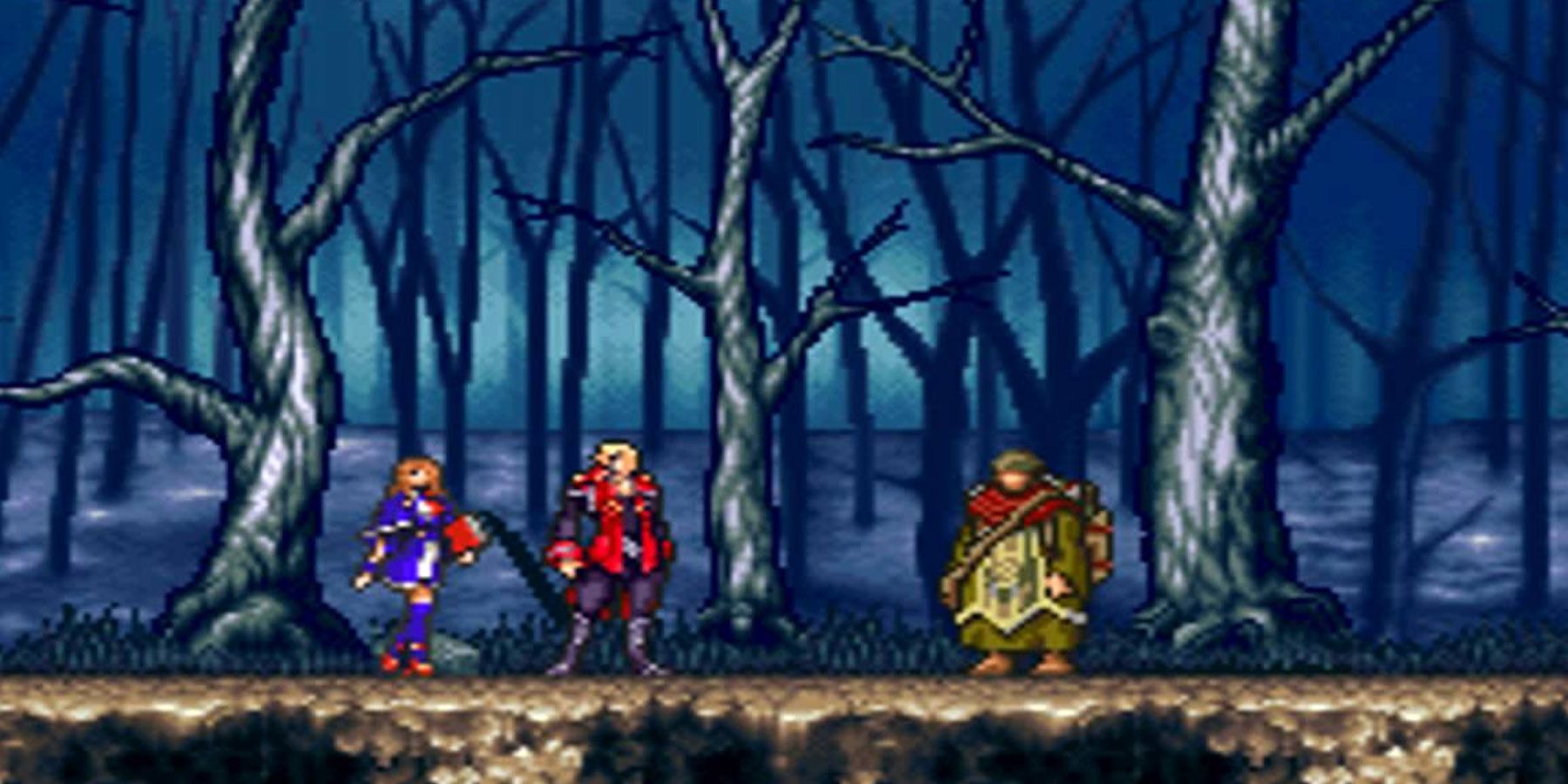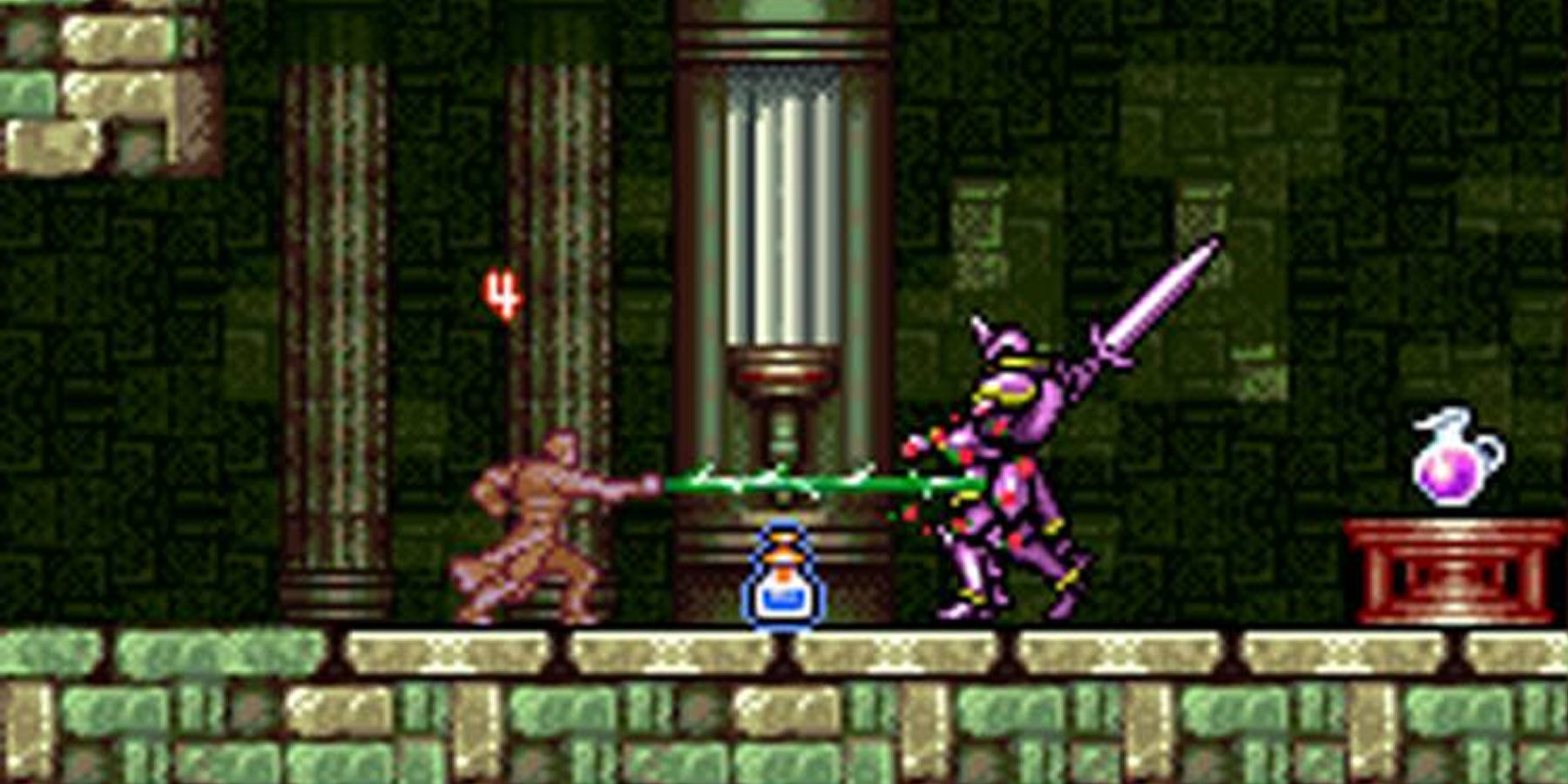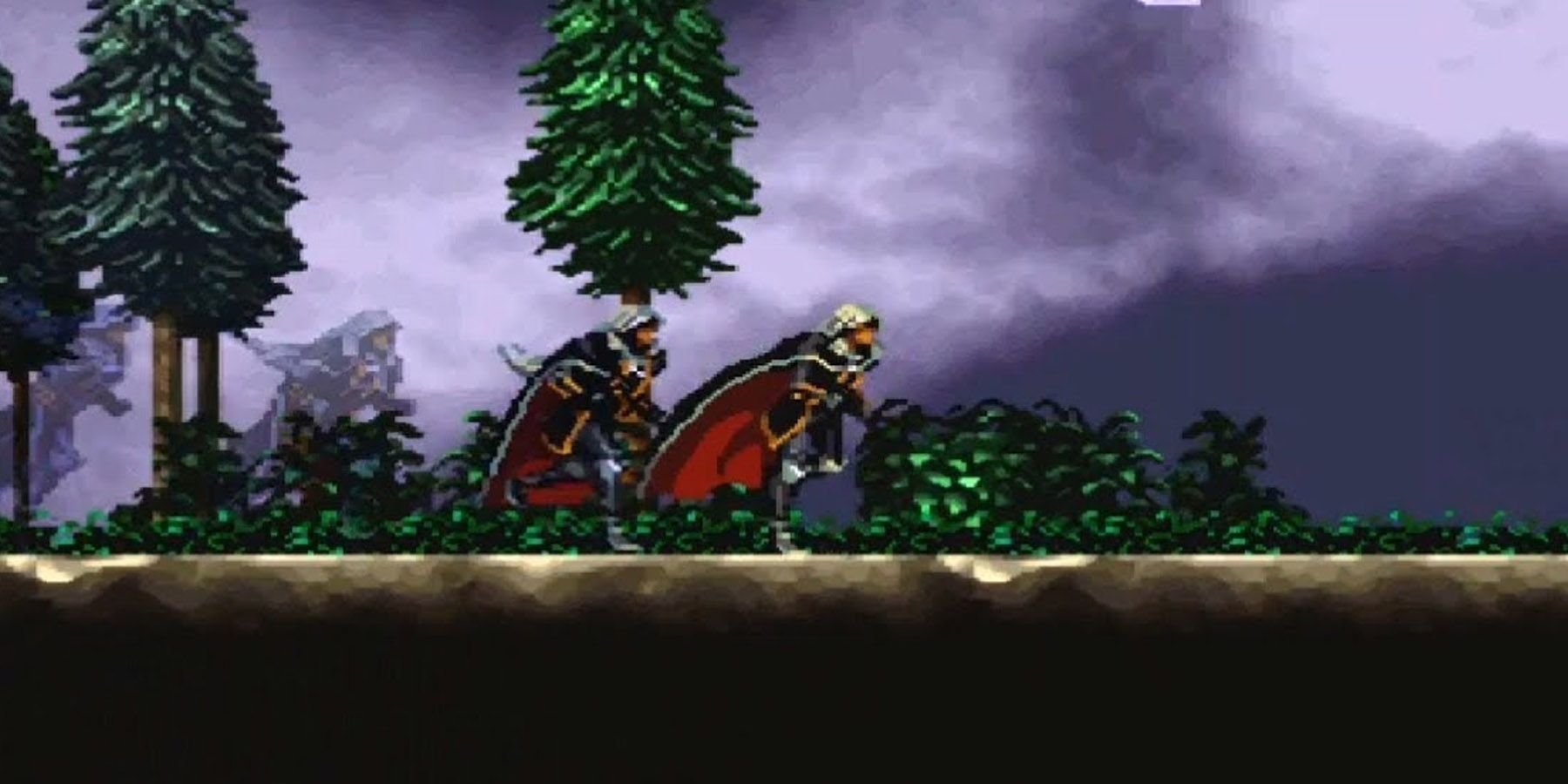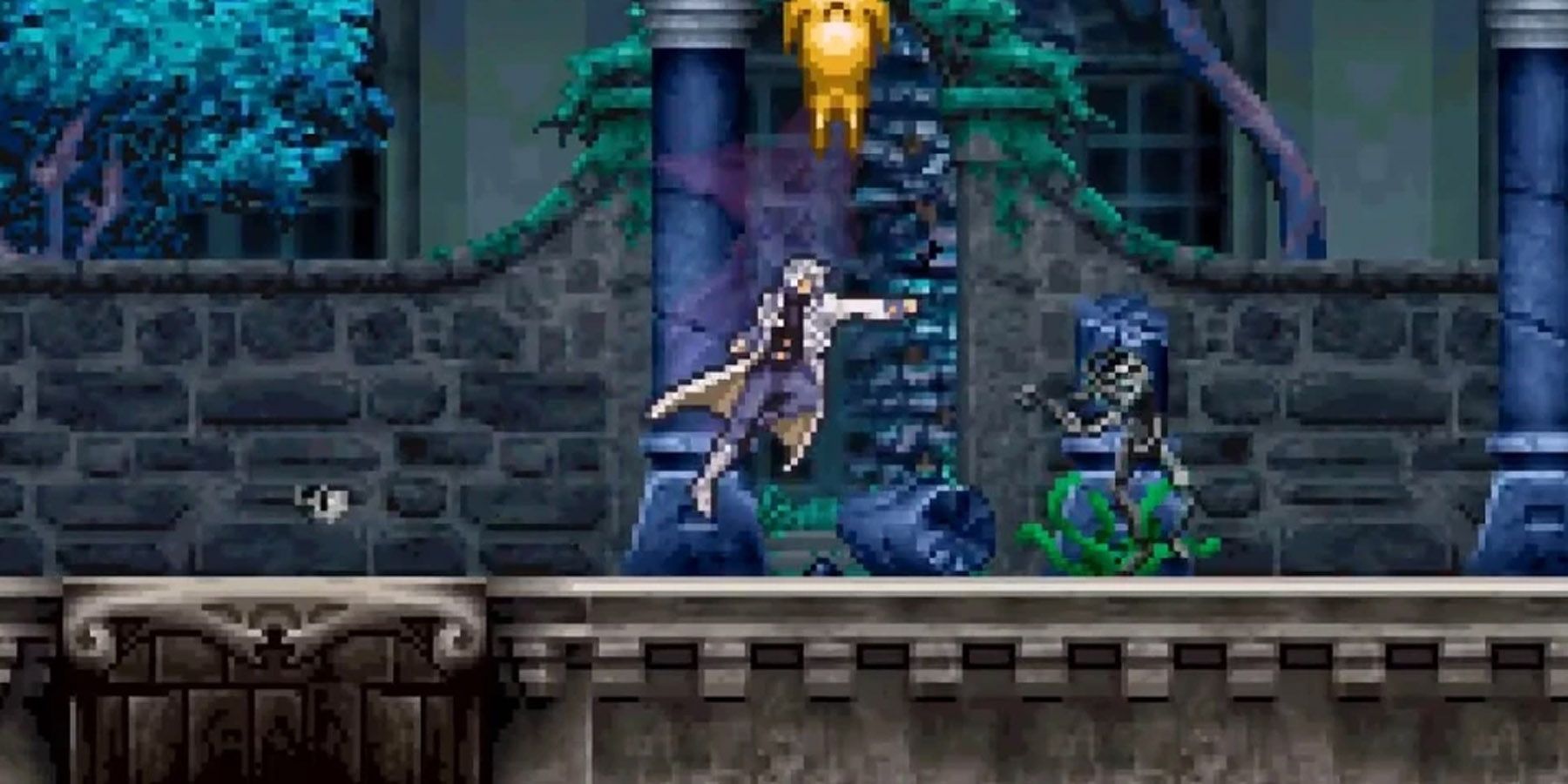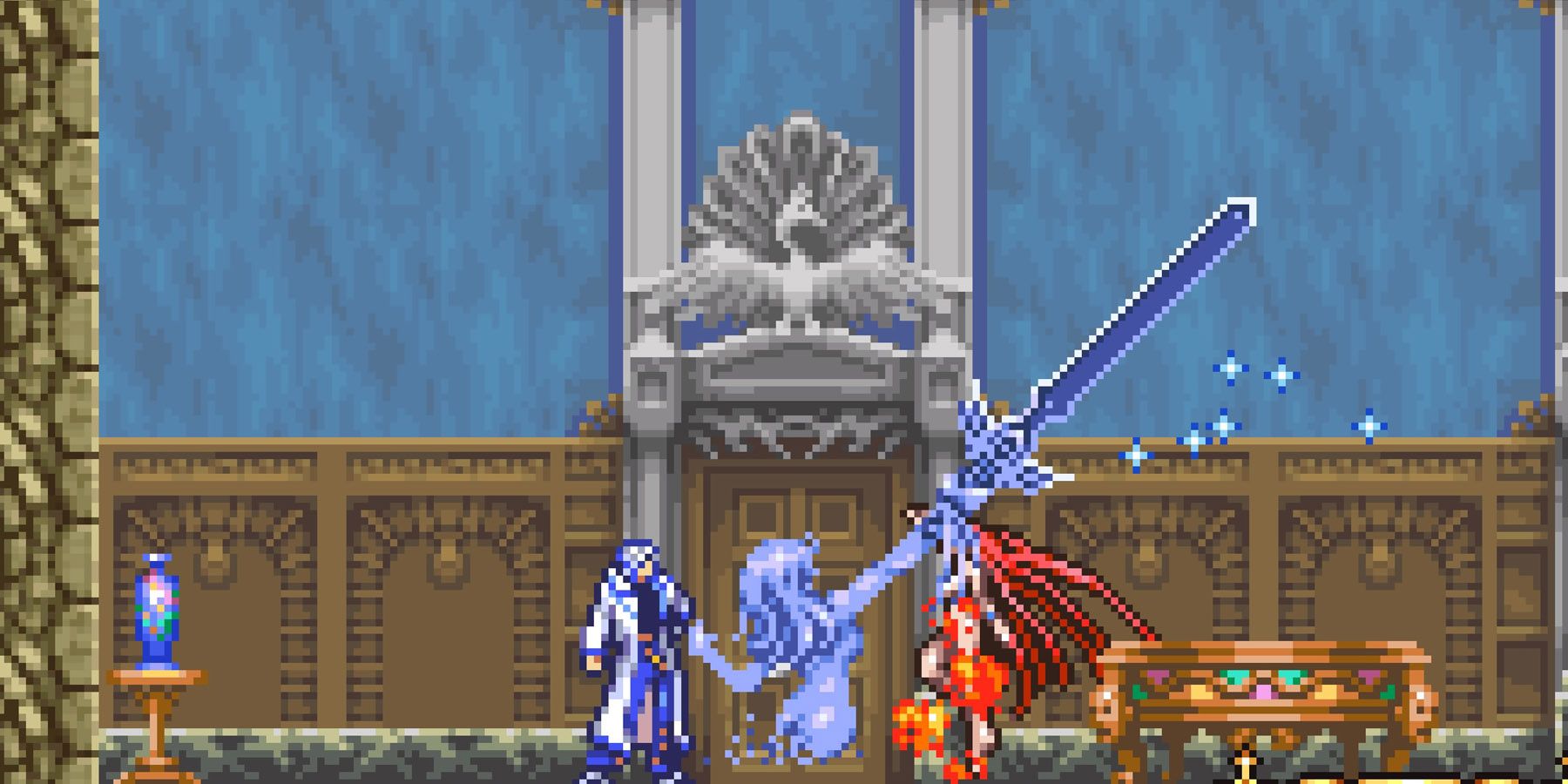Due to the nature of Dracula’s curse, his iconic Castlevania fortress resurfaces in the centuries that span the Castlevania franchise. Though it always boasts an imposing Gothic appearance, Dracula’s Castlevania changes each of its iterations, reflecting both the nature of the games and the progression of time. Alongside Dracula’s resurrection every century, his castle resurfaces with a new appearance.
While the enemies and bosses constantly roam the halls of Dracula’s Castles, the castles' framework makes each Castlevania entry more challenging than the last. Across Konami’s roster of Castlevania entries, specific versions of Dracula’s Castle dominate the rest regarding visual and game design.
10 Castlevania (1986)
The First Appearance Of Castlevania
Castlevania
- Platform(s)
- Nintendo Game Boy Advance , Nintendo Entertainment System , PC , Switch , PS4
- Released
- May 1, 1987
- Developer(s)
- Konami
- Genre(s)
- Action , Platformer
| Stages | 6 |
| Bosses | 6 |
| Game Length | 3-5.5 Hours |
The Castlevania franchise officially begins with the game of the same name, with “Castlevania” referring to Dracula’s castle. As Simon Belmont, players must use his Vampire Whip to traverse eighteen Stages across six Levels, fighting bosses such as the Giant Bat, Medusa, and Death.
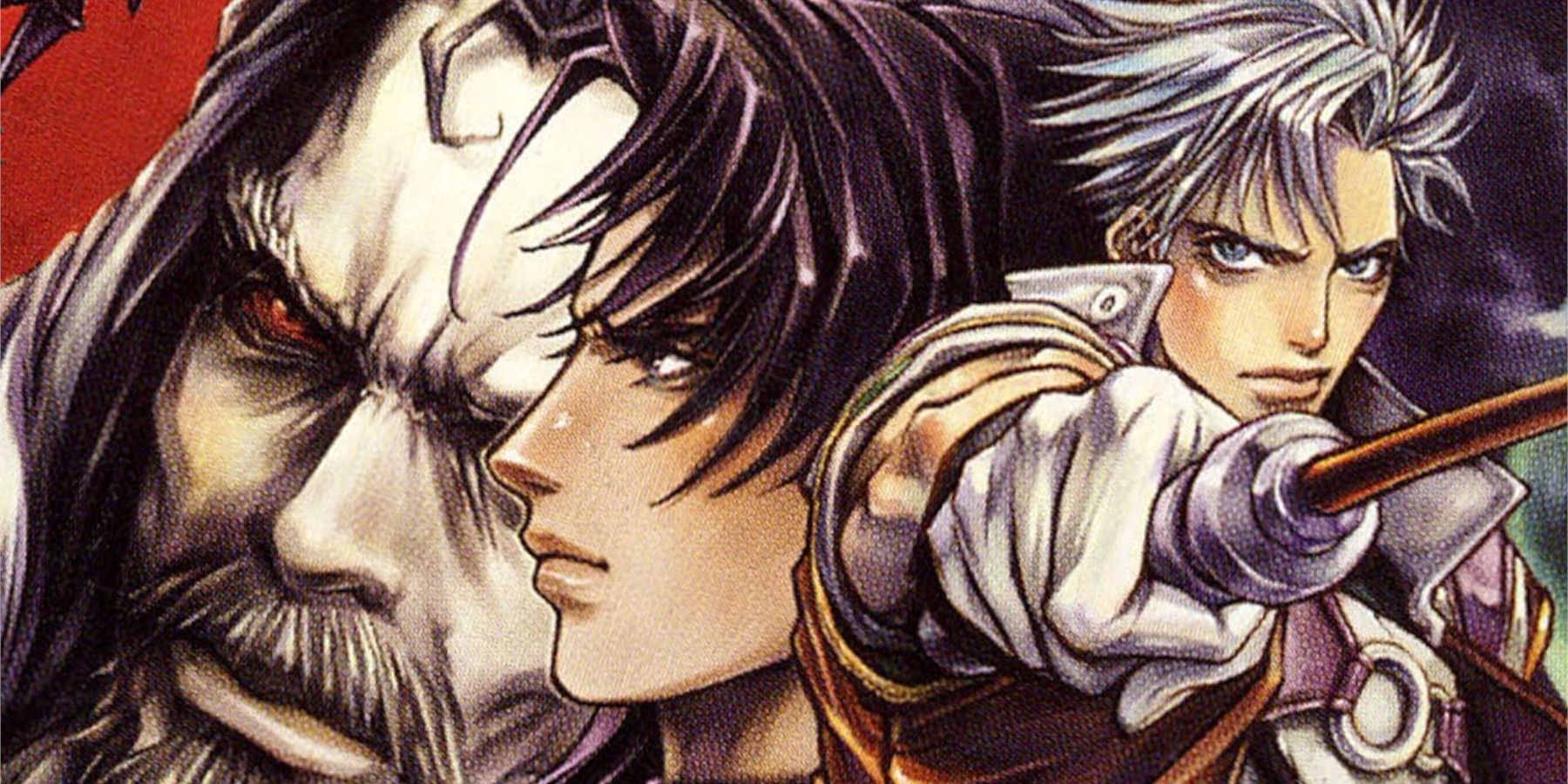
Every Game in the Castlevania Advance Collection Explained
The Castlevania Advance Collection is announced for the NIntendo Switch and has some of the best games in the series from the Game Boy Advance.
The original Castlevania map features eventual franchise staples laid out straightforwardly. Staples include the tutorial session by the gate, open-air rooftops, a drop to underground caverns, and the iconic climb on the clock tower to fight Dracula. Although possessing a linear progression, each stage helps players get used to the game's mechanics.
9 Super Castlevania 4 (1991)
Remake Of Castlevania 1
| Stages | 13 |
| Bosses | 17 |
| Game Length | 7-14 Hours |
A remake of Simon’s victory against Dracula, Super Castlevania 4 improves upon the original Castlevania with a tighter level design. Super Castlevania 4 lives up to its name by adding more challenge to platforming despite having a linear map.
Super Castlevania 4 possesses a longer map with more stage elements. The beginning of the game challenges players with moving stream water, hinting at the background mechanics that lie ahead. Players eventually encounter traps, a room that moves in a circle, and a boss that shrinks the more players destroy the immediate environment.
8 Harmony Of Dissonance (2002)
A Castle In Another Dimension
| Stages | 14 |
| Bosses | 19 |
| Game Length | 7.5-11.5 Hours |
With Symphony of the Night’s co-director Koji Igarashi as the producer of Harmony of Dissonance, this“ spiritual successor” becomes an immediate point of comparison to Alucard’s protagonist debut. Harmony tries to elevate Symphony’s exploration with another attempt at a two-castle system.
In a bid to return to concepts from Symphony, gameplay in Harmony of Dissonance takes place in a more spread-out castle. Unlocking the Room of Illusion gives players access to one of multiple teleporting areas, which aids in the back-and-forth between each castle. Defeating the game requires full exploration of the two maps.
7 Rondo Of Blood (1993)
First Branching Segments
| Stages | 9 |
| Bosses | 20 |
| Game Length | 3.5-7 Hours |
Richter Belmont in Rondo of Blood arms himself with the Vampire Killer Whip to rescue his beloved Annette in Dracula’s castle. Being the first Castlevania game to dabble into branching paths, Rondo of Blood gives players freedom of choice early in the game. Players can pursue alternating routes to tackle all of the game’s stages and bosses, save for a section exclusive to a second playthrough.
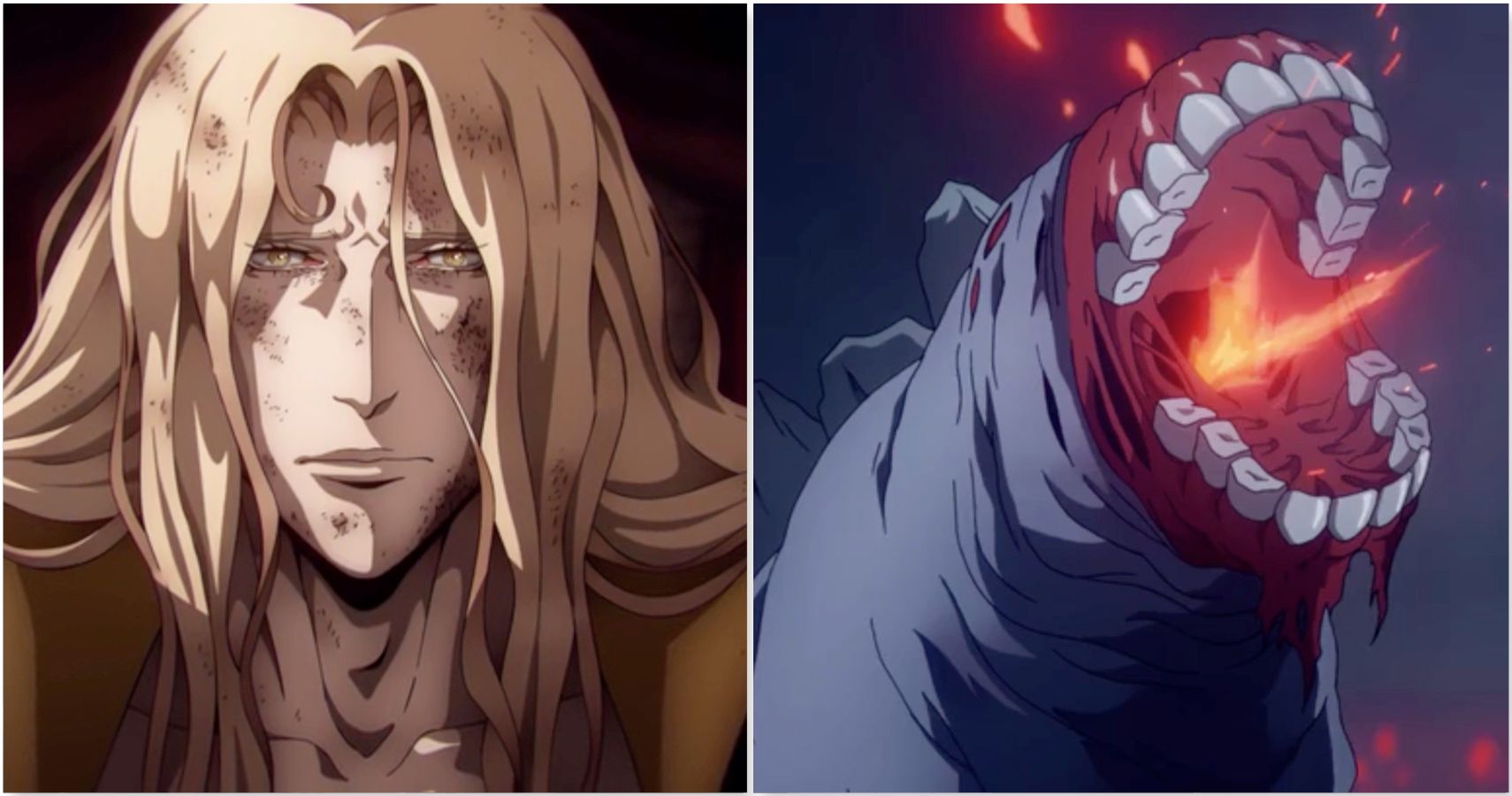
Castlevania: 5 Things The Entire Anime Series Did Right (& 5 Things It Did Wrong)
The Castlevania anime series pleased a lot of fans of the game franchise, but there are a few aspects where it did more wrong than right.
In the game's rescue side mission, Richter does some back-and-forth between the game's "upper" and "lower" stages, exposing him to unique backdrops such as a river raft level and a ghost ship. Paths merge again before the fight against Shaft and Dracula.
6 Order Of Ecclesia (2008)
Features Separate Playing Areas
Castlevania: Order Of Ecclesia
- Platform(s)
- Nintendo DS , Nintendo 3DS
- Released
- October 21, 2008
- Developer(s)
- Konami
- Genre(s)
- Action-Adventure , RPG
| Stages | 20 |
| Bosses | 15 |
| Game Length | 10.5-21.5 Hours |
The absence of the Belmonts in the 1800s put the world's fate in the hands of Shanoa, an amnesiac member of the titular Order of Ecclesia. Shanoa can only finish the first half of the game upon rescuing all villagers of the hub town of Wygol, which brings players on a tour of forests and mountains, as well as unique settings like a prison island and a manor.
Saving all villagers unlocks Castlevania, smaller than other games' iterations of the castle. However, most of the court becomes accessible once Shanoa phases the walls, leaving most other bosses optional. Defeating Death also gives access to optional training hall and large cavern stages, while the iconic ascent to the clock tower puts Shanoa face-to-face with the Count.
5 Portrait Of Ruin (2006)
Features Extra Areas Called Portraits
Castlevania: Portrait of Ruin
- Platform(s)
- Nintendo DS , Nintendo 3DS
- Released
- December 5, 2006
- Developer(s)
- Konami
- Genre(s)
- Action-Adventure
| Stages | 10 |
| Bosses | 25 |
| Game Length | 9.5-23.5 Hours |
Portrait of Ruin tasks the duo Jonathan Morris and Charlotte Aulin to defeat Dracula in his castle. Castlevania in this game is relatively compact. The game prioritizes exploring “extra” areas, courtesy of the eponymous Portraits scattered across levels.
The decision to create separate areas inside Castlevania removes the need to make backgrounds and environments consistent with the structure of Dracula’s castle. This option paved the way for unique locales such as deserts, forests, and even an antigravity dimension.
4 Circle Of The Moon (2001)
A Straightforward But Large Castle
| Stages | 14 |
| Bosses | 11 |
| Game Length | 9-16.5 Hours |
Despite not carrying the blood of the Belmonts, Nathan Graves of Circle of the Moon proves himself worthy as he defeats Dracula in one of the most challenging titles in the series. Circle of the Moon’s Castlevania condenses its surface area into nine major Levels. Unlocking movement remains a central aspect of exploration, as each level from the starting catacombs will open mobility options.
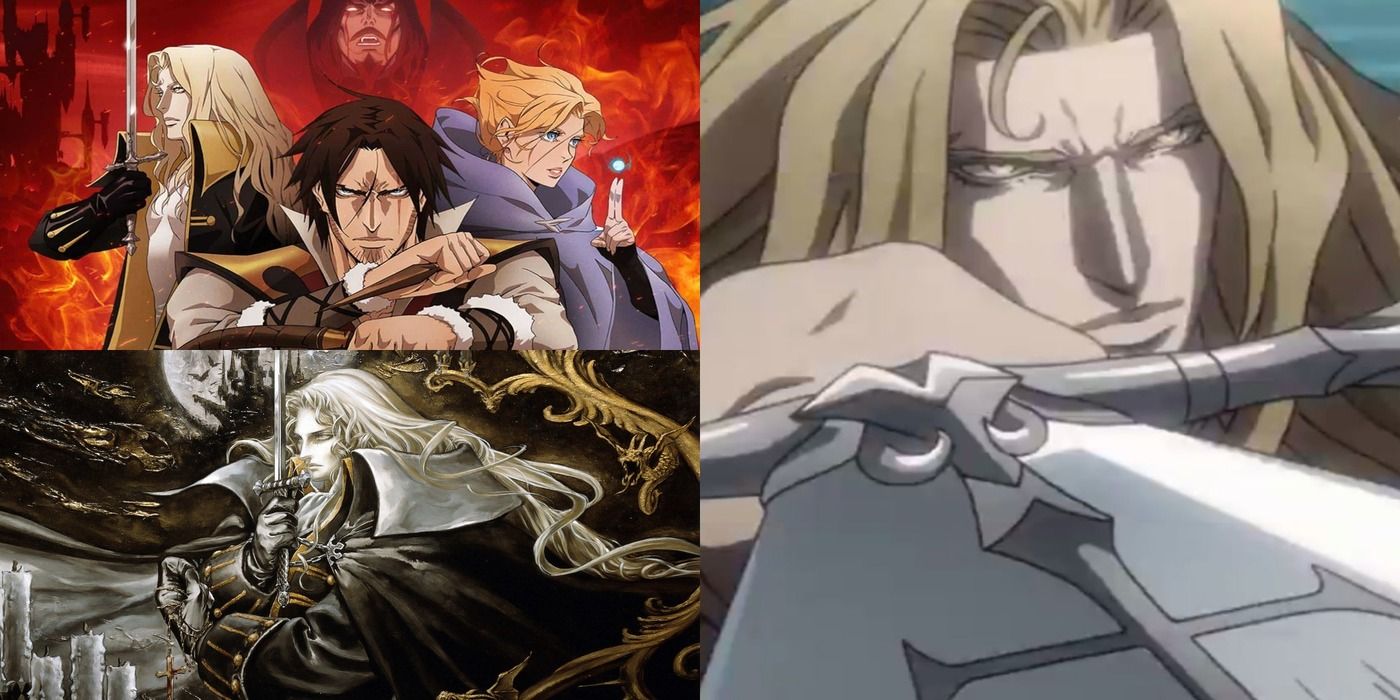
Netflix's Castlevania: 6 Things About Alucard The Show Changed From The Games
A unique and intriguing character, Alucard is much more complex in the Castlevania Netflix adaptation than he is in the original games.
The second half of the game opens afterward, unlocking puzzle components such as a high-level Carmilla guarding a poisonous waterway. Defeating Carmilla unlocks the high jump. The late game consists of a rerun of bosses via the battle arena, and a climactic finish with Dracula.
3 Symphony Of The Night (1997)
Features An Inverted Second Castle
Castlevania: Symphony of the Night
| Stages | 14 |
| Bosses | 29 |
| Game Length | 8.5-15.5 Hours |
Alucard’s adventures in Symphony of the Night cement Castlevania as a Metroidvania game. The game's starting segment pits Alucard against Rondo’s final bosses. Eventually, it opens up an iteration of Castlevania. Unlocking Alucard's Double Jump and his Mist and Bat Forms eventually unlocks three more sets of “hidden” areas, leading to the surprise twist of the game: a second castle.
This “second castle” in Symphony starts the trend of extra areas in the latter half of most of its Castlevania sequels. While Symphony’s second castle remains revolutionary, it’s held back by the clunkiness of traversal mechanics. While this mechanic is rehashed and improved upon by other games, the exploration in Symphony remains unmatched.
2 Dawn Of Sorrow (2005)
Monster Collection Encourages Map Exploration
Castlevania: Dawn Of Sorrow
- Platform(s)
- Nintendo DS
- Released
- October 4, 2005
- Developer(s)
- Konami
- Genre(s)
- Action-Adventure
| Stages | 12 |
| Bosses | 16 |
| Game Length | 9.5-24.5 Hours |
Dawn of Sorrow trades in extra dimensions and a second castle with its singular compact fortress. Players control Soma, whose dark powers have returned. Being a Nintendo DS game, Dawn of Sorrow incorporates Aria's condensed castle with gimmicks such as stylus-enabled ice-breaking, a stage with shuffling rooms, and a multi-layered boss fight involving mirror dimensions.
Unlocking all endings is a part of the game's main progression. One bad ending has Dario hinting at two other boss fights. Another bad ending unlocks both Dracula Soma and the post-game Julius Mode. The good ending involves entering the Abyss to kill Abbadon and the Colossal Menace.
1 Aria Of Sorrow (2003)
Streamlined One-Map Design
| Stages | 14 |
| Bosses | 13 |
| Game Length | 7-14 Hours |
Canonically the last entry in the franchise’s story, Aria of Sorrow presents Castlevania without its owner, as the game explores the inheritor of Dracula’s powers. Soma’s Tactical Souls encourage the full exploration of the map, which consists of a single castle that packs the tightness of Symphony without the backtracking of Dawn.
Aria of Sorrow works its way around the Game Boy Advance's limited hardware by focusing on a larger map instead of having an extra castle. Soma can also take full advantage of the Tactical Soul System with the game's Warp Rooms, giving easy access to areas with specific monsters. Warp Rooms also give players convenient access to a shop outside the castle, for the most consistent exploration in the series.

